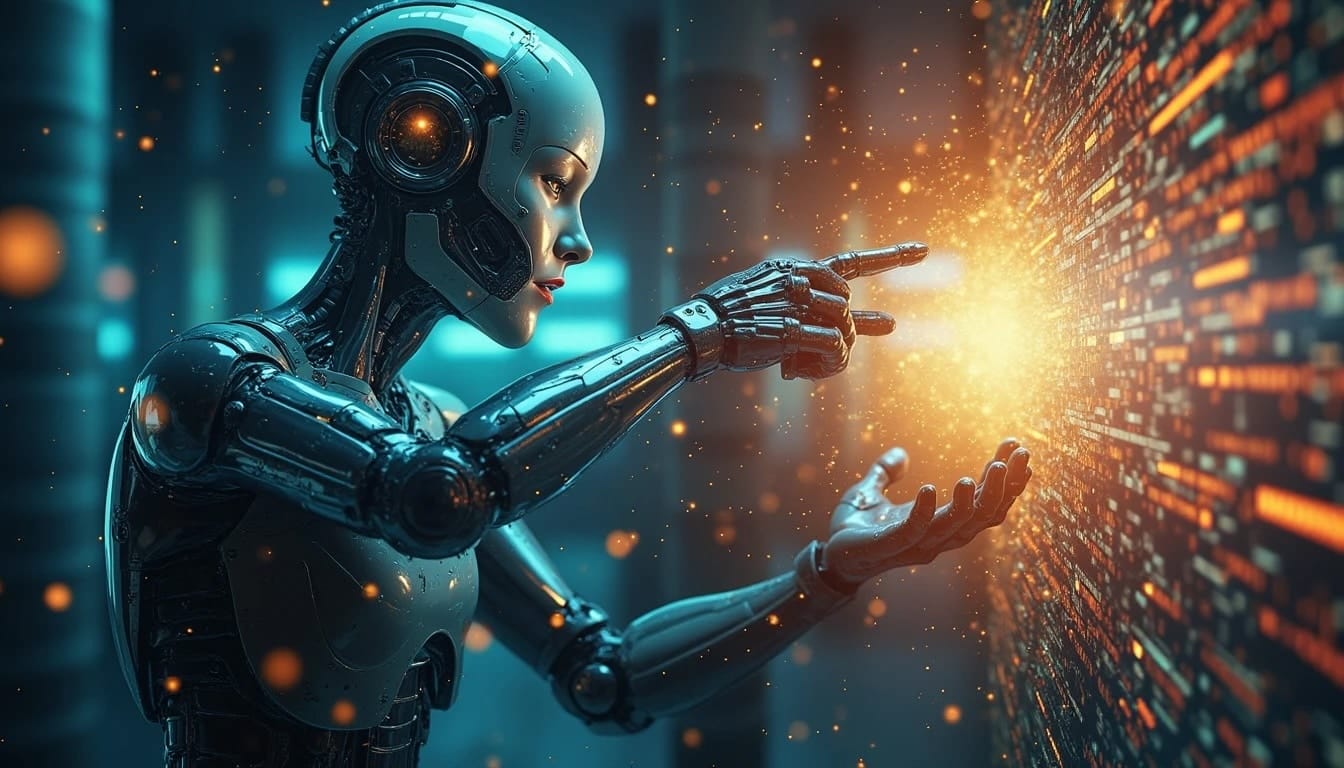Sure! Here’s the translation of your text into American English:
—
Since its inception in 1969, when ARPANET marked the birth of a network connecting universities and research centers in the United States, the Internet has evolved into the connective tissue of modern life. Now, 55 years later, the advent of artificial intelligence (AI) is opening new horizons but also presents technical, ethical, and social challenges that will define the future of the network. In this new era of AI, the need for computational resources and the management of large volumes of data have highlighted the importance of advanced and secure infrastructure.
AI and Computational Resources: A Race Toward Scalability
The rise of artificial intelligence has created an unprecedented demand for computational resources. Advanced AI algorithms and the processing of massive amounts of data require high-performance computing capabilities, which can currently only be provided through powerful data centers and the adoption of technologies like cloud computing. However, this constant need for processing raises a series of issues related to energy consumption and sustainability, concerns that are becoming increasingly relevant on the global technological agenda.
Companies like Google, Microsoft, and NVIDIA are leading the implementation of AI-optimized data centers, with architectures that enable accelerated processing through graphics processing units (GPUs) and other specialized chips like tensor processing units (TPUs). Yet even these advancements must contend with the physical and energy limitations of current data centers. Recent estimates suggest that large-scale AI infrastructure could consume up to 10% of the world’s electricity in the next decade. This challenge necessitates seeking out more efficient and sustainable solutions, such as the development of AI-optimized hardware and the use of renewable energy sources.
David Carrero, co-founder of Stackscale (Grupo Aire), notes that “Artificial Intelligence is driving the demand for cloud infrastructure exponentially. The key to addressing this challenge will be the development of more sustainable and efficient data centers, capable of managing unprecedented data volumes without compromising performance or security.”
Hyperconnectivity and Exponential Data Growth
AI relies on analyzing large volumes of data to train and optimize its models, which intensifies the need for robust infrastructures for the transfer and storage of information. According to data from the International Data Corporation (IDC), it is estimated that by 2025, 175 zettabytes of data will be generated worldwide, driven by the growth of the Internet of Things (IoT), mobile devices, and AI applications. This volume of data presents significant challenges in terms of storage capacity, information security, and the need to optimize data transmission.
To adapt to this new reality, Internet operators and service providers are investing in high-speed networks like 5G and the development of more advanced fiber optic networks. These infrastructures will enable more agile data flows with lower latency, which is crucial for deploying real-time AI applications, such as autonomous vehicles or telemedicine. However, this expansion also requires protecting these networks from cyberattacks, especially as the volume and complexity of the data transmitted increase exponentially.
Security and Privacy: Challenges in the Age of AI
As artificial intelligence grows more powerful, concerns about the privacy and security of personal data arise. AI models can analyze patterns and generate detailed profiles of users, raising significant ethical and legal implications. The European Union, with initiatives like the General Data Protection Regulation (GDPR) and the Artificial Intelligence Act, has begun to establish a regulatory framework to protect citizens’ privacy in the context of AI use.
Furthermore, AI also presents risks in terms of cybersecurityCybersecurity solutions are essential in the era of…. The automation and sophistication of cyberattacks through AI, such as deepfakes and malicious algorithms, have proven that technologies can be employed to compromise the security of systems. In response, both governments and companies are developing AI-based cybersecurity systems capable of identifying and neutralizing threats in real-time. However, this battle between attackers and defenders is a continuous race that requires the ongoing updating of systems and regulations.
Additionally, Carrero adds that “We are in a critical phase in the evolution of the Internet, where cloud infrastructure must not only grow in capacity but also in intelligence. Implementing AI technologies in data centers themselves is essential to optimize resource use and reduce energy impact.”
Responsible AI: A Matter of Ethics and Transparency
The development of AI raises questions about ethics and the impact of these technologies on society. From biases in algorithms to job automation, the effects of artificial intelligence extend beyond technological challenges, affecting the social and labor fabric. The lack of transparency in AI models is another concerning aspect, as many automated decisions, especially in sectors like finance or the judiciary, can be difficult for users to understand and challenge.
International organizations and tech companies are promoting responsible AI, which advocates for the development of ethical, unbiased, and transparent algorithms. Implementing audits and explaining algorithms in terms understandable to users are just some of the recommended practices to ensure that AI acts in the best interest of society.
Towards a Smarter and More Sustainable Internet
Fifty-five years after its creation, the Internet remains the pillar upon which the digital society is built, but the era of artificial intelligence is driving the need for even smarter and more sustainable infrastructure. The challenges of scalability and energy efficiency in data centers, the protection of data in a hyperconnected world, and the promotion of ethical and transparent AI are topics that will shape the future of the network.
While these challenges are considerable, collaboration among companies, governments, and international organizations can pave the way for an Internet adapted to the needs of the AI era—one that is faster, safer, and more responsible. This is the challenge facing the global network on its 55th anniversary: to evolve and transform to remain the engine of innovation and human development.
Source: Artificial Intelligence News
—
Let me know if you need any further assistance!

